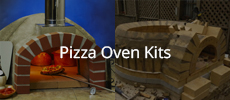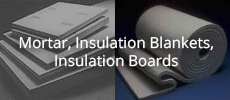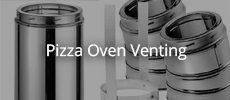Originally posted by paulkjrobbins
View Post
Yes, I built it myself.
The concrete corner pillars, slabs, arches entry shelf, and chimney cap are all plain ole Quikrete with carbon black/charcoal colorant added. Heat is not an issue with any of those castings. I had thought I might need a heat shield of some sort for the underside of the arch casting that surrounds the opening on the front landing, as I though it might see too much heat when starting fires right at the opening. It has not been a problem.





 Also if you build a hemispherical arch (not what you are showing) the 9.75" radius that gives you a 19.5" opening sits perfectly on a 2.5 inch brick at the bottom of the arch.
Also if you build a hemispherical arch (not what you are showing) the 9.75" radius that gives you a 19.5" opening sits perfectly on a 2.5 inch brick at the bottom of the arch.
Leave a comment: